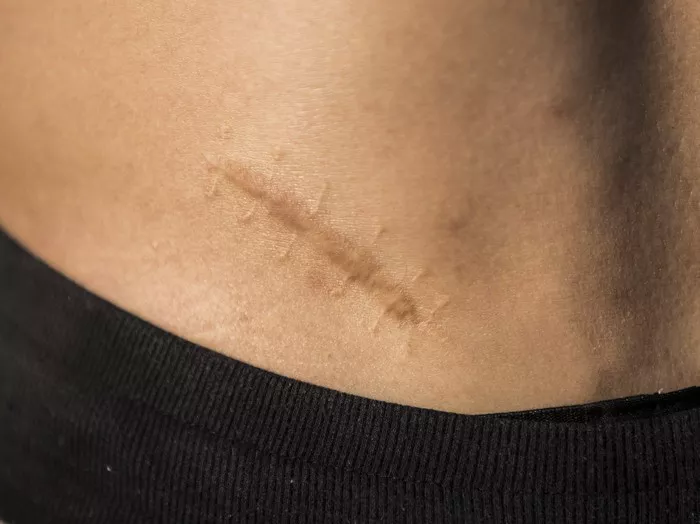Scar tissue formation is a natural part of the body’s healing process after an injury, surgery, or trauma. While scars are a sign of recovery, they can sometimes lead to functional limitations, aesthetic concerns, and discomfort. Understanding how to repair and manage scar tissue is crucial for optimal recovery and quality of life. This comprehensive guide explores various methods to repair scar tissue, including medical treatments, home remedies, physical therapies, and preventive strategies.
Understanding Scar Tissue
What is Scar Tissue?
Scar tissue is the fibrous connective tissue that replaces normal skin or other tissues after an injury. It is composed primarily of collagen, a protein that the body produces to heal wounds. Unlike normal tissue, scar tissue has a different texture and appearance, often being thicker and less flexible.
Types of Scars
Hypertrophic Scars: Raised scars that do not extend beyond the boundary of the original wound.
Keloid Scars: Thick, raised scars that extend beyond the original injury site.
Contracture Scars: Scars that cause tightening of the skin, often restricting movement, commonly resulting from burns.
Atrophic Scars: Depressed scars, such as those caused by acne or chickenpox.
Medical Treatments for Scar Tissue
Surgical Options
This procedure involves removing the scar tissue and rejoining the skin. It can improve the appearance of the scar and restore function if the scar is restrictive.
Laser Therapy
Laser treatments can reduce the thickness and redness of scars by breaking down scar tissue and stimulating the growth of healthy skin.
Non-Surgical Treatments
Steroid Injections
Steroid injections can soften and flatten hypertrophic and keloid scars by reducing inflammation and collagen production.
Cryotherapy
This method involves freezing scar tissue, particularly effective for keloids. The treatment reduces the size and hardness of the scar.
Dermal Fillers
For atrophic scars, dermal fillers can be injected to raise the depressed areas to the level of surrounding skin.
Topical Treatments
Silicone Gel Sheets
Silicone sheets or gels are widely used to flatten and soften scars. They are applied to the scar for several hours daily over several months.
Pressure Therapy
Applying constant pressure to the scarred area can help flatten hypertrophic and keloid scars. This is often achieved using pressure garments.
Physical Therapy and Rehabilitation
Massage Therapy
Regular massage of scar tissue can help break down the fibrous tissue, improve circulation, and increase flexibility. Techniques include:
Cross-Friction Massage: Applying pressure perpendicularly to the scar to break down collagen fibers.
Myofascial Release: Gentle sustained pressure applied to the fascia to alleviate pain and restore motion.
Stretching and Exercise
Scar tissue can restrict movement and lead to stiffness. Stretching and specific exercises can improve mobility and reduce the tightness of scar tissue. It’s important to follow a guided program designed by a physical therapist.
Ultrasound Therapy
Ultrasound therapy uses sound waves to penetrate the skin and stimulate blood flow, which can promote the healing and softening of scar tissue.
Nutritional Support for Scar Healing
Essential Nutrients
Essential for collagen synthesis, Vitamin C can help in the formation of healthy skin and scar tissue repair.
Vitamin E
Known for its antioxidant properties, Vitamin E can help reduce scar appearance when applied topically.
Zinc
Zinc plays a crucial role in wound healing and tissue repair.
Protein
Adequate protein intake is necessary for collagen production and the repair of damaged tissues.
Healthy Diet
A balanced diet rich in fruits, vegetables, lean proteins, and whole grains provides the necessary nutrients for optimal healing and scar repair.
Home Remedies for Scar Tissue Repair
Natural Oils and Extracts
Aloe Vera
Known for its healing properties, aloe vera can soothe and reduce inflammation in scar tissue.
Coconut Oil
Coconut oil is rich in fatty acids that can improve skin hydration and elasticity, helping to reduce scar tissue.
Rosehip Oil
Rich in essential fatty acids and antioxidants, rosehip oil can help improve the texture and appearance of scars.
Herbal Remedies
Honey
Honey has natural antibacterial and healing properties that can help reduce scar formation.
Onion Extract
Often found in over-the-counter scar treatments, onion extract can help reduce the height and appearance of scars.
Homemade Treatments
Exfoliation
Regular gentle exfoliation can help remove dead skin cells and promote the growth of healthy tissue.
Hydration
Keeping the scar and surrounding skin well-hydrated can improve elasticity and the appearance of the scar.
Preventive Strategies
Proper Wound Care
Cleanliness
Keeping a wound clean reduces the risk of infection and promotes optimal healing conditions.
Moisturization
Applying a suitable moisturizer can keep the wound area supple and reduce the risk of developing hard, inflexible scar tissue.
Protection
Protecting a healing wound from sun exposure can prevent darkening and worsening of the scar.
Avoiding Tension on the Wound
Minimizing stress and tension on a healing wound can prevent the formation of larger, more noticeable scars. This can be achieved through proper bandaging and avoiding strenuous activities that stretch the area.
Use of Silicone Products
Regular use of silicone sheets or gels from the early stages of healing can significantly reduce the formation of hypertrophic and keloid scars.
Advanced and Emerging Treatments
Microneedling
Microneedling involves using fine needles to create micro-injuries in the skin, stimulating collagen production and improving the texture and appearance of scars.
Platelet-Rich Plasma (PRP) Therapy
PRP therapy uses the patient’s own blood, processed to concentrate the platelets, which are then injected into the scar tissue. This treatment can accelerate healing and improve the appearance of scars.
Stem Cell Therapy
Stem cell therapy is an emerging treatment that can potentially regenerate damaged tissues and improve scar appearance by promoting the growth of healthy skin cells.
Phototherapy
Phototherapy, including intense pulsed light (IPL) and LED light therapy, can reduce redness and improve the texture of scar tissue.
Psychological and Emotional Considerations
Impact of Scarring
Scars can have a significant psychological and emotional impact, affecting self-esteem and confidence. Addressing these issues is an important aspect of holistic scar management.
Support and Counseling
Counseling and support groups can provide emotional support and coping strategies for individuals dealing with significant scarring.
Conclusion
Repairing scar tissue involves a multifaceted approach, combining medical treatments, physical therapy, nutritional support, and preventive measures. By understanding the nature of scar tissue and employing a variety of strategies, individuals can effectively manage and reduce the impact of scars on their lives. Whether through surgical intervention, home remedies, or advanced therapies, the goal is to promote healing, improve the appearance of scars, and enhance overall quality of life. Always consult with healthcare professionals to determine the most appropriate treatment plan for your specific needs.
[inline_related_posts title=”You Might Be Interested In” title_align=”left” style=”list” number=”6″ align=”none” ids=”9022,8931,8844″ by=”categories” orderby=”rand” order=”DESC” hide_thumb=”no” thumb_right=”no” views=”no” date=”yes” grid_columns=”2″ post_type=”” tax=””]
































